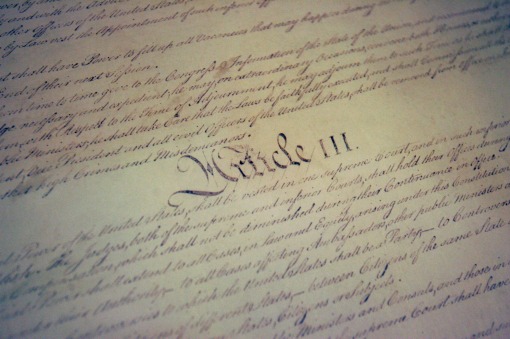Part 3 in our Law is Phun series, courtesy of the footnote in Easter Seals.
United States ex rel. Mayo v. Satan & His Staff, 54 F.R.D. 282, 283 (D. Pa. 1971)
Okay, so I’m thinking, maybe there is a bar, named “Satan and his Staff,” that has run afoul. But no, the first thing I read in this case is that the plaintiff is claiming that “Satan has on numerous occasions caused plaintiff misery and unwarranted threats, against the will of plaintiff, that Satan has placed deliberate obstacles in his path and has caused plaintiff’s downfall.”
Yes… I think I must read further. Apparently the plaintiff (Mr. Mayo, not the U.S.), claimed that Satan (yes, the fallen angel himself), had violated his civil rights as a citizen of the United States.
The court dealt with this by saying that even if the plaintiff could prove a civil rights violation, he had presented no evidence that the court had jurisdiction over the defendant. Of course, if Satan, like anyone, had ever filed a case in federal court, he would have submitted to the jurisdiction of hte United States.
The plot thickens, as jurisdiction may actually be available because, and I quote, “there is an unofficial account of a trial in New Hampshire where this defendant filed an action of mortgage foreclosure as plaintiff.”
But then the court decides that this case would still be improper, because frankly, the class of people who are likely to want to be joined in this case are too numerous, thus it would be more appropriate to be a class action suit.
The attempt to file this case was denied. Duh. What were they expecting, an injunction? An injunction is only granted if it is easy for the court to enforce.
I did a quick LexisNexis search and found that while a couple of “churches” following Satan have been sued, and a guy who had the nickname, “Satan” violated his probation and it was therefore revoked, this was the only case I could find where someone attempted to sue Satan. On the other hand, God has been sued multiple times, and a surprising number of people using the name “God” or “Allah” as their name or nickname have been subject to criminal prosecution or been a party to a lawsuit. I guess more people are mad at God than at Satan.
Come on folks, if you defeat God in court, do you really think you will win in the long run?
 This is not the first time this conflict has come up. And it has been ignored before, or rather, dealt with by reverting to the pre-raise salary.
This is not the first time this conflict has come up. And it has been ignored before, or rather, dealt with by reverting to the pre-raise salary.
Comments